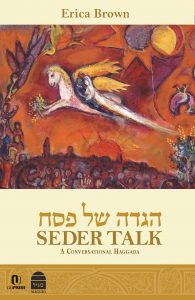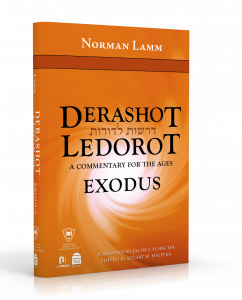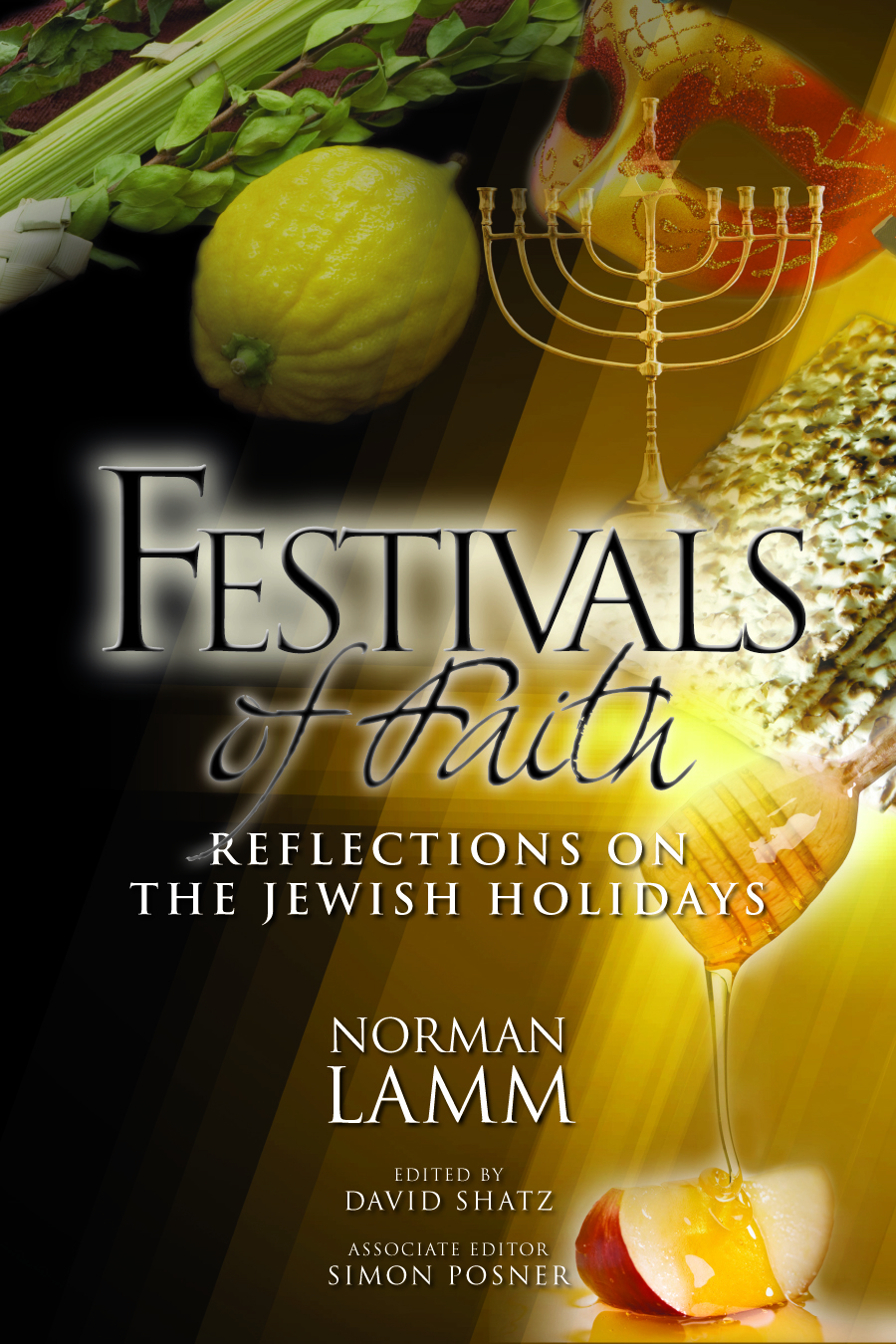Excerpted from Rabbi Shmuel Goldin’s ‘Unlocking The Torah Text: An In-Depth Journey Into The Weekly Parsha- Bamidbar’ co-published by OU Press and Gefen Publishers
This week we read Parashat Devarim which recounts the story of the spies, and precedes the fast of Tisha B’Av. In this excerpt from Unlocking the Torah Text: Bamidbar, Rabbi Shmuel Goldin discusses the link between the two similar fasts, Tisha B’Av and Yom Kippur.

Context
The Jewish calendar contains two extraordinary fast days that are, at once, powerfully similar, yet vastly different.
These occasions, Yom Kippur and Tisha B’Av, share fundamental characteristics as the only full twenty-five-hour fast days in Jewish tradition and as the only fasts that include the five halachic inuyim (afflictions): the prohibitions on eating and drinking, washing, anointing, the wearing of leather shoes and marital relations.
Yet as similar as these days are, they are also poles apart. Yom Kippur is a biblical fast day; Tisha B’Av, of rabbinic origin. Tisha B’Av remains immersed in sorrow while Yom Kippur is cautiously, solemnly optimistic.
As if to further highlight the connection and contrast between these two fast days, the calendar links them in a multi-week spiritual journey. Beginning with the three mournful weeks preceding Tisha B’Av, this passage continues through the Shiva D’nechemta, the seven weeks of consolation that lead to the high holidays, culminating with Yom Kippur.
Questions
Clearly, our tradition sees Yom Kippur and Tisha B’Av as connected, but how? What can be learned from the comparison and contrast of these two fast days?
Approaches
A
The answer may well emerge from the mists of history. Intriguingly, the rabbis draw yet another link between Yom Kippur and Tisha B’Av. Each of these occasions, they say, originates in a seminal sin committed at the dawn of Jewish history.
B
Yom Kippur is born as a result of the chet ha’egel, the sin of the golden calf.
In the shadow of Revelation at Mount Sinai, the nation, frightened by the specter of abandonment by Moshe, creates and worships a golden calf. Moshe, upon descending the mountain, witnesses the nation’s backsliding and smashes the divinely given Tablets of Testimony. God, upon forgiving the nation at Moshe’s behest, commands Moshe to once again ascend the mountain and receive a second set of tablets (see Shmot: Ki Tissa 2).
The rabbis relate that Moshe descends with the second tablets on Yom Kippur.This biblical fast day, the holiest day of the Jewish year, thus rises out of the forgiveness granted by God for the sin of the golden calf.
C
Tisha B’Av emerges as a consequence of the chet hameraglim, the sin of the spies.
As we have seen (see the two previous studies), a short time after their departure from Sinai, the Israelites find themselves at the southern border of the Promised Land of Canaan. Twelve spies are sent to observe the land and its inhabitants preparatory to the nation’s entry. Upon their return, ten of the twelve spies deliver a pessimistic report, citing the Israelites’ inability to conquer the land through battle. In reaction to the account of the spies, the nation despairs, weeping through the night and rising up in rebellion against Moshe and Aharon.
Based upon calendar computation, the rabbis maintain: “That very night [when the Israelites wept in response to the report of the spies] was the eve of Tisha B’Av. Said the Holy One Blessed Be He to them [the Israelites]: ‘You have cried for naught – and I shall establish for you crying across the generations.’ ”
Rooted in the nation’s despair over the report of the spies is the tragedy and sorrow that will visit their descendents, over and over again, throughout the ages, on the mournful day of Tisha B’Av.
D
Although the rabbis support their contentions concerning the origins of Yom Kippur and Tisha B’Av through calendar computation, their intended message obviously strikes deeper. There are no coincidences on the Jewish calendar. To the rabbinic mind, concrete philosophical bonds link these two fast days, respectively, to tragic transgressions deep in our nation’s past. What are these connecting links and how can they help deepen our understanding of two of the most important observances in Jewish tradition?
E
We have suggested in the past that the sin of the golden calf reflects the Israelites’ desperate desire for distance from the demands of an omnipotent God.
From the outset, the Israelites are unable and/or unwilling to face the new responsibilities thrust upon them at Sinai, and they respond with immediate retreat: “And the entire people saw the thunder and lightning and the sound of the shofar and a smoking mountain and they trembled and stood from afar. And they said to Moshe, ‘You speak with us and we will listen; and let not God speak with us, lest we die.’ ”
And when, forty days later, Moshe apparently fails to return from the summit of the mountain at the expected time, and the people face the fact that they will now be required to interact with God directly, without the benefit of Moshe as their intermediary, their desperate desire for distance from God becomes an overwhelming fear. The Israelites create a golden calf to take Moshe’s place, to stand between them and their Creator.
In the aftermath of the sin, after punishing those most directly involved, God moves to educate the nation to the ramifications of their crime. Threatening to distance Himself from the people, as per their expressed desire, He forces them to glimpse the emptiness that would result from such distance. The nation, in response, falls into mourning.
God thus reminds the Israelites of a fundamental truth that courses through all human relationships. While safety can be found in emotional distance, the desire for such distance produces a life of emptiness. Only those willing to risk the pain and heartache that can result from nearness to others will ultimately experience the potential beauty of friendship and love.
God’s message to the people in the aftermath of the chet ha’egel is powerful and clear: If I am absent from your lives you will be safe, as through distance you avoid the vulnerability that would accompany My close connection with you.
You will also miss out, however, on the grandeur that would have resulted from our closeness.
F
We can now begin to understand why the rabbis perceive a fundamental connection between the sin of the golden calf and Yom Kippur, the holiest day of the Jewish year.
Yom Kippur is the day when, yearly, we move to repair the inevitable distance that has developed between us and our Creator. We mourn our loss of perspective, explore our missteps and admit our failings. We atone for our consistent tendency to pull away from God through our practice of comfortable rather than confrontational Judaism (see Shmot: Ki Tissa 2, Points to Ponder). We pledge to move close again – close enough to allow divine law to challenge our lives and test our commitments.
The message of this holiest of days is clear. The distance that develops between man and God can be repaired. Just as God ultimately forgives the Jewish nation at Sinai and invites them, once again, fully into His presence; so, too, through the process of tshuva on Yom Kippur we can reconnect intimately with our Creator.
G
At the core of the chet hameraglim, on the other hand, lies a profoundly different failing, yielding a profoundly different divine response (see previous two studies).
Ultimately the spies and the nation are guilty of a loss of faith in themselves. Not only do they doubt God’s ability to bring them into the land, but, even more importantly, they lose trust in their own capacity for change. They see themselves still as the slaves who toiled under Egyptian rule, and they negate the transformative impact of all that has occurred during and after the Exodus.
To this failing, God responds with harsh judgment. Intergenerationally, the nation is forgiven and will ultimately enter the land. The generation of the Exodus, however, remains irredeemable. When man loses sight of his own majestic potential, he simply cannot achieve.
H
The connection drawn by rabbinic thought between the sin of the spies and the mournful day of Tisha B’Av now becomes abundantly clear.
In stark contrast to the ultimately optimistic, reparative day of Yom Kippur, Tisha B’Av remains, each year, an occasion rooted in mourning and sorrow. We bemoan our own replication of the sin of the spies, our loss of personal and national vision, our inability to rise above our pettiness and spite, our failure to glimpse the majestic potential in others and in ourselves.
Because of these continued failings, Tisha B’Av rings, over and over again, to the divine decree that, according to the rabbis, was delivered as the Jews wept over the report of the spies: You have cried for naught, and I shall establish for you crying across the generations.
I
When you draw away from Me, God says on Yom Kippur, the anniversary of the chet ha’egel, our relationship can yet be repaired.
When you lose faith in yourselves, however, He decrees on Tisha B’Av, the anniversary of the chet hameraglim, you and your generation will fail to achieve your potential, and the realization of your dreams will be further delayed.
Points to Ponder
A strange liturgical anomaly emerges in light of the rabbinic association of the sin of the spies with Tisha B’Av and the sin of the golden calf with Yom Kippur.
Each year, a powerful and poignant body of prayers known as Selichot, Prayers of Forgiveness, is recited on the days leading to and during the Days of Awe (Rosh Hashana and Yom Kippur).
Central to these prayers is a section containing Moshe’s plea to God for forgiveness: “Forgive please the iniquity of this people according to the greatness of Your kindness and as You have borne this nation from Egypt until now.”
And God’s response: Salachti ki’dvarecha, “I have forgiven, according to your words.”
The problem is, however, that this interchange is found in the Torah in conjunction with the sin of the spies, not the sin of the golden calf. Given the vastly different nature of these two fast days, why would our tradition choose a source connected to the origin of Tisha B’Av as a central piece of the Yom Kippur liturgy?
The answer may well lie in the universal application of God’s words in this interchange with Moshe (see Shelach 2).
Salachti ki’dvarecha, “I have forgiven, according to your words.” My forgiveness, Moshe, is shaped by your own vision of the people’s potential. Given that your own words reflect recognition of their inability to change, My forgiveness will reflect that reality, as well.
Each year, as we approach the holiest season of our calendar, God turns to each of us and proclaims: Salachti ki’dvarecha, “I have forgiven, according to your words.” My judgment of you will be based upon your own vision of yourself. The higher you reach, the greater you see your own potential, the greater My capacity for forgiveness, the greater the promise for the coming year.
Each year, we, together with God, determine the parameters of God’s forgiveness.








